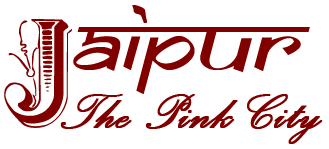
Jaipur Travel Guide
Jaipur Heritage Monuments : Jantar Mantar (Observatory)
 |
Jaipur Travel Guide Jaipur Heritage Monuments : Jantar Mantar (Observatory) |
|
Book Flights, Hotels |
|
|
|
|
|
Holidays >> Travel >> Things to do >> India >> Rajasthan >> Jaipur >> Heritage >> Monuments >> Jantar Mantar Jantar Mantar JaipurJantar Mantar, An Observatory, World Heritage Site, Monuments in Jaipur, Hot spots for Jaipur Heritage Tour, Special Attractions in Jaipur Tour, Hotels, Cheap Flights, Holidays, Travel, Vacations, Trip Advisor, Things to do, India, Travel Agency, Air Tickets, Heritage, Jaipur, Travel Planner, Monuments, RajasthanKapali Yantra
Eastern Kapali Yantra has various lines drawn crossing its entire surface. It is not used for any observation but for solving astronomical problems graphically. Western Kapali Yantra is the one really used for observations. Semi-circular lines are drawn all over the surface of it and are like Jai Prakash Yantra in graduations and functions. Chakra YantraThese are two identical circular instruments made of an alloy on seven metals. Each instrument bears 360 graduations. They are framed on stone pillars. There is a hole in the middle where a brass tube is attached at the time of celestial observations. Both the extreme ends of this brass tube touch and move on the graduated circle. Through this tube we watch the particular heavenly body and the coinciding reading indicates the declination and the Meridian Pass Time of the object. Jai Prakash Yantra
The shadow of sun falls through the metal ring on the graduated surface. With the help of this, we are able to calculate Local time, Altitude, Azimuth, Meridian Pass Time, Zenith Distance and Declination of the sun as well as its longitude. This instrument can also be used for celestial observations during night for which the observer has to go inside the cavity and sit between the slabs. The celestial body is then observed through the hole of the metal ring. Ram YantraThis Yantra got the name on the name of Maharaja Ram Singh. There are two massive cylindrical structures mainly used for calculating the Altitude and the Azimuth of the celestial bodies. They look identical and are used for similar observations, though at alternate time. These instruments give direct readings. These two instruments built in masonry and stone consist of twelve vertical columns and an equal number of horizontal slabs. In the center of the instrument a perpendicular rod is fixed which is of the same height as the structure itself. There are 360 vertical lines representing the Azimuth circles and 90 horizontal lines representing Altitude. During day time, we can read the celestial positions by observing the shadow of the central rod. During night, the observer has to go inside the instrument and watch the object through the top of the central rod. Digansha YantraThis instrument for calculating Azimuth consists of three circular structures, one inside the other, made in the plane of horizon. In the middle of the instrument is a pillar like structure about 1 meter in height. The second circular wall is just like a ring and the same height as the pillar and about 5 meters in diameter. The outer-most circle is about 2 meters in height and 8 meters in diameter. All these structures have marble tops precisely graduated in 360 degrees each. They are even sub-divided in terms of decimals. Two metal wires are tightly stretched across the outermost circle and they represent the North-South and East-West directions respectively. At the centre, supported by these wires is a metal knob. This is the most accurate instrument for determining the Azimuth of the sun. This is done by observing the shadow of the ring on the floor. Then a thread is tied to the knob and taken to the outermost wall passing through the shadow of the ring. The reading of the horizon on the third wall is the Azimuth of sun. Further, sun's rising and setting time can also be calculated by this instrument. For observations during night, we have to get inside the instrument and lie down o n its floor to look at the desired planet through the metal ring in such a way that the planet, the hole of the metal ring and the eye of the observer fall in straight line. Shashthansha YantraIt is nothing but a sextant which is used for finding out Zenith distance and declination. It consists of two arcs of 60o each, made adjacent to the eastern and western walls of the dark room of Samrat Yantra. This sextant instrument is used at mid-day when the sun shines through two tiny holes in the walls of the dark room for about a minute and the rays fall on the circular arcs graduated in 60o each, lying north-south in the plane of the Meridian. There are four of such arcs two in each chamber and 28 feet 4 inches in radius. The Abandoned InstrumentOn entering the observatory, towards right, one comes across, a huge red sandstone round structure of about 3 meter diameter with a thick metal rod at its centre. It is one instrument which was not completed and was abandoned by Maharaja Sawai Jai Singh because it was realized that it would be a cumbersome instrument to make and impractical to rotate it on this huge base. Suggested Readings for JaipurTags: Jantar Mantar, World Heritage Site, An Observatory, Forts in Jaipur, Monuments in Jaipur, Hot spots for Jaipur Heritage Tour, Special Attractions in Jaipur Tour, Hotels, Cheap Flights, Holidays, Travel, Vacations, Trip Advisor, Things to do, India, Travel Agency, Air Tickets, Heritage, Jaipur, Travel Planner, Monuments, Rajasthan, Car Rentals, All Inclusive Packages, Jaipur the Pink City, jaipurthepinkcity.com
Comments |
|
|
|
Book Train Tickets